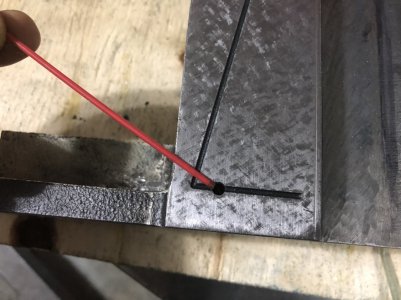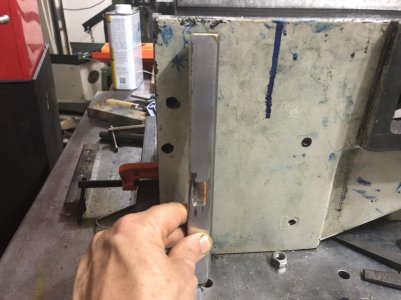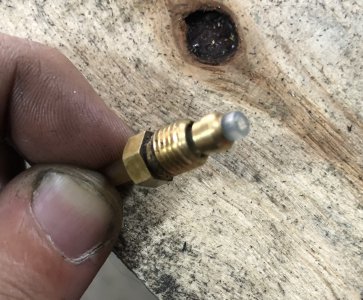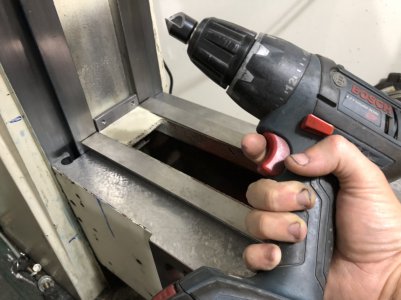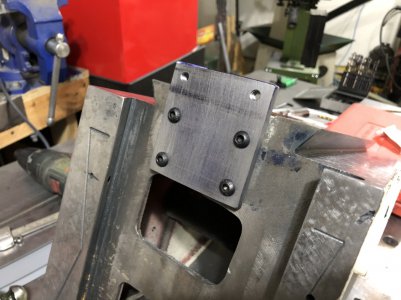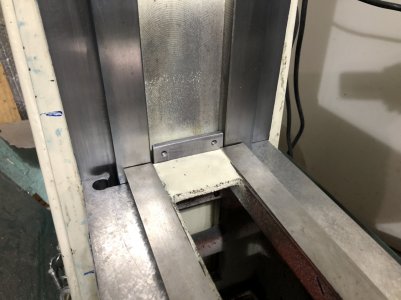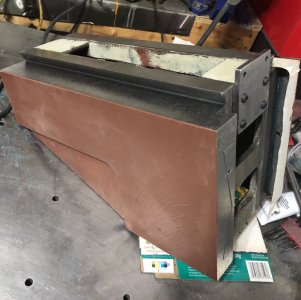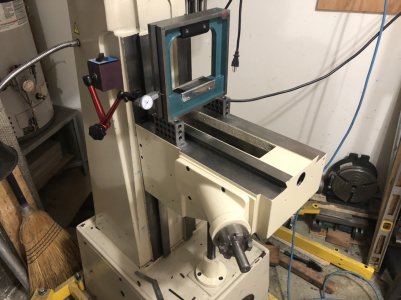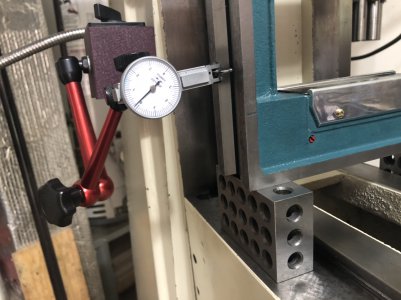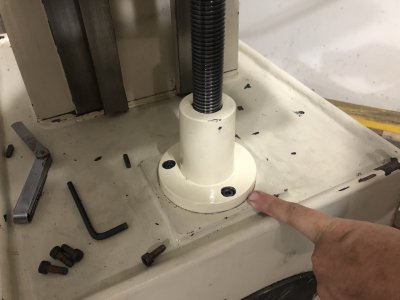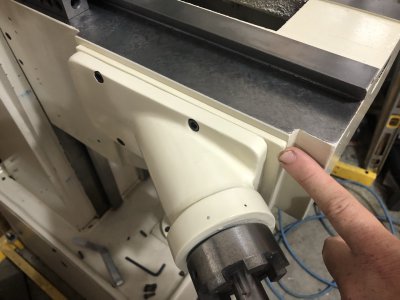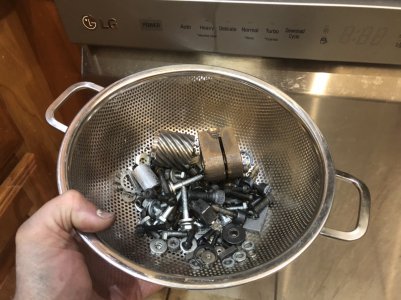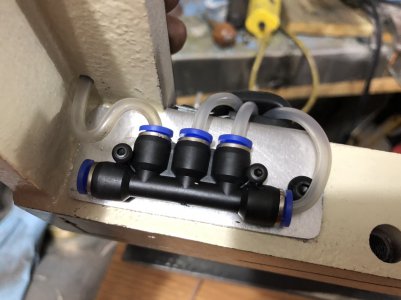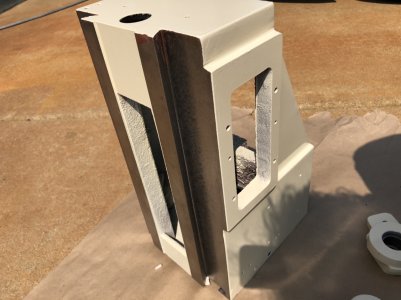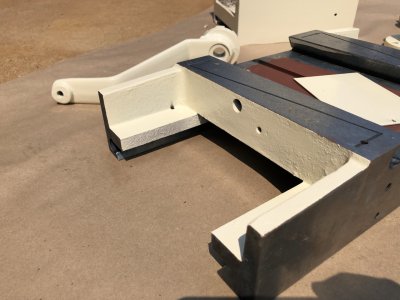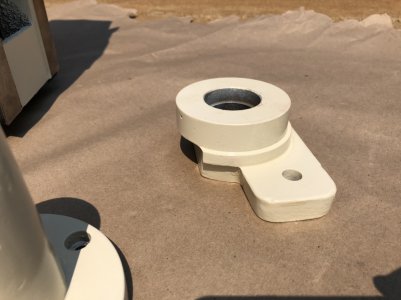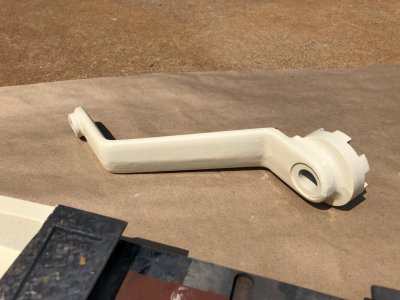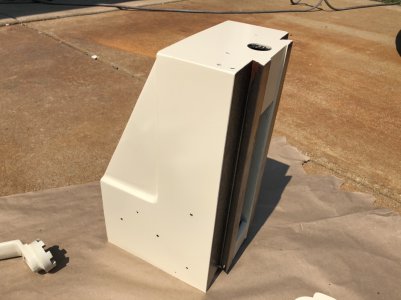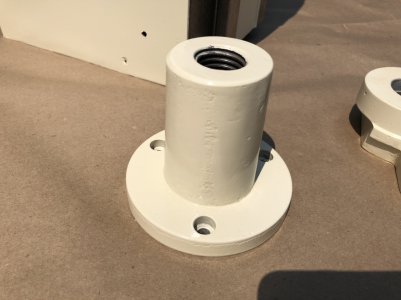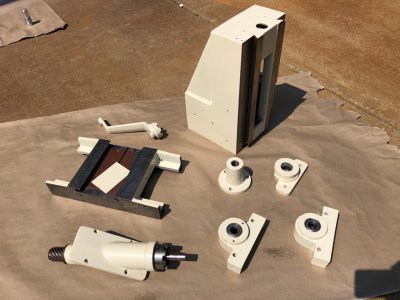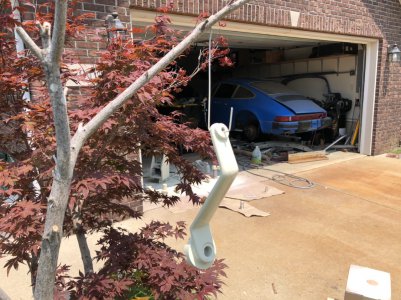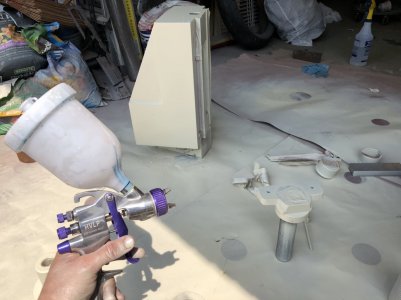- Joined
- Feb 7, 2018
- Messages
- 160
They did you oil passages just a little differently on your mill than mine.
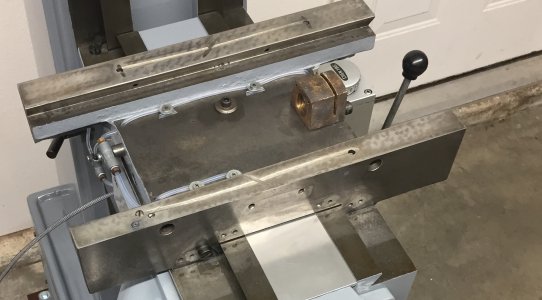
On mine the feed groove connects all the way across to the supply holes for the Y-axis lubrication grooves below. Not that this is probably much better. I have contemplated reworking the oil supply lines on mine when I get around to taking the mill apart again to correct problems I am now noticing after using the machine fore quite some time. I have just resorted to manually applying oil in addition to the one shot to make sure everything is lubricated.
Also, the oil supply line on my knee going to the gib side for some reason delivers oil to the back side of the gib only. No oil actually makes it to the sliding surface of the gib as there are no passage ways thru the gib itself. I'm not sure how this is typically correctly done and is something else I would check on your machine.
Maybe while you're at it add a lubrication supply to the leadscrew nuts? I have contemplated reworking mine with a small manifold with a couple valves to direct all the oil flow and pressure to specific locations on the mill.
My X-axis dro is mounted to the front of the table as you mentioned you were considering. Things start to get tight with the scale but its doable.
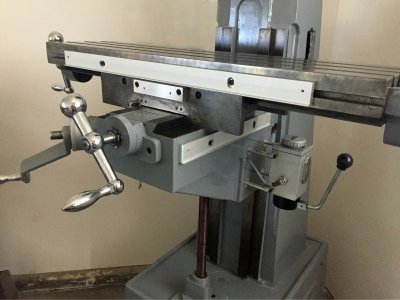
The gib locks don't work in my finding with the scale and cover in place. It was impossible to reset the handle tab positions. I purchased resettable handle locks from MC and they work great. https://www.mcmaster.com/6848K36/
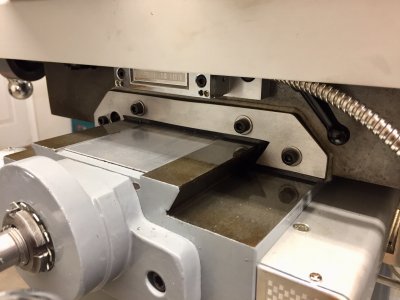
With your saddle off the machine it would also be much easier to drill and tap the mounting holes for your Y-axis scale. I milled the casting flat where I wanted these hole located as it was pretty rough.
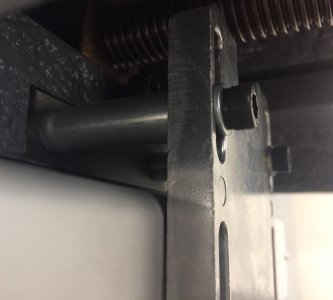

On mine the feed groove connects all the way across to the supply holes for the Y-axis lubrication grooves below. Not that this is probably much better. I have contemplated reworking the oil supply lines on mine when I get around to taking the mill apart again to correct problems I am now noticing after using the machine fore quite some time. I have just resorted to manually applying oil in addition to the one shot to make sure everything is lubricated.
Also, the oil supply line on my knee going to the gib side for some reason delivers oil to the back side of the gib only. No oil actually makes it to the sliding surface of the gib as there are no passage ways thru the gib itself. I'm not sure how this is typically correctly done and is something else I would check on your machine.
Maybe while you're at it add a lubrication supply to the leadscrew nuts? I have contemplated reworking mine with a small manifold with a couple valves to direct all the oil flow and pressure to specific locations on the mill.
My X-axis dro is mounted to the front of the table as you mentioned you were considering. Things start to get tight with the scale but its doable.

The gib locks don't work in my finding with the scale and cover in place. It was impossible to reset the handle tab positions. I purchased resettable handle locks from MC and they work great. https://www.mcmaster.com/6848K36/

With your saddle off the machine it would also be much easier to drill and tap the mounting holes for your Y-axis scale. I milled the casting flat where I wanted these hole located as it was pretty rough.



